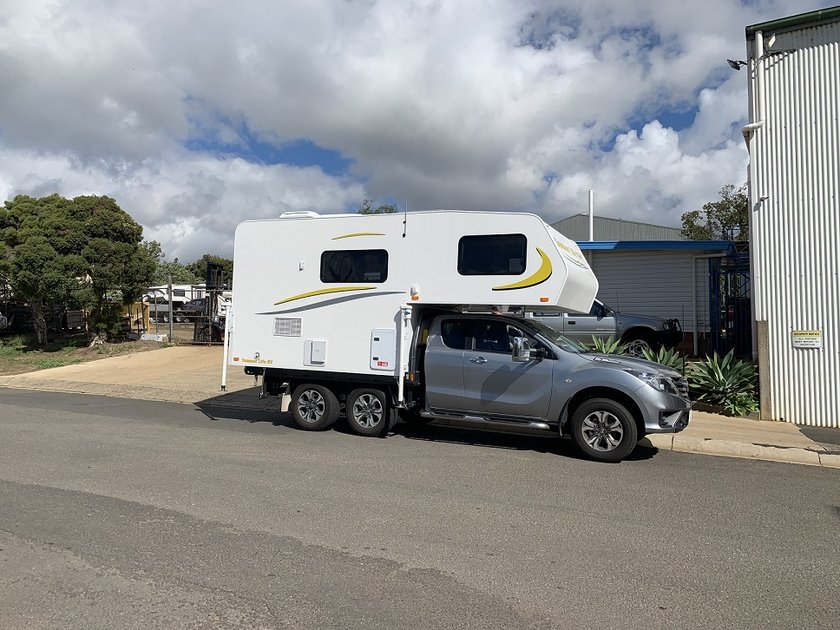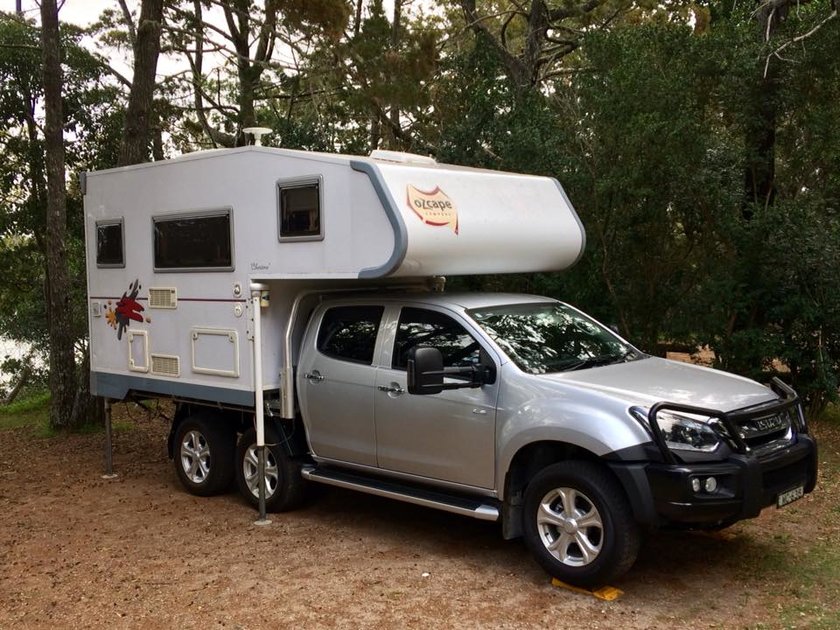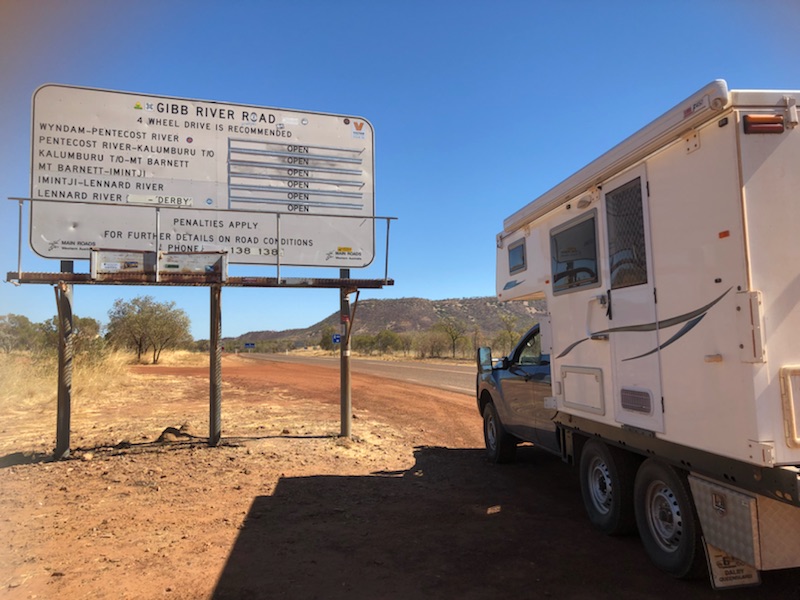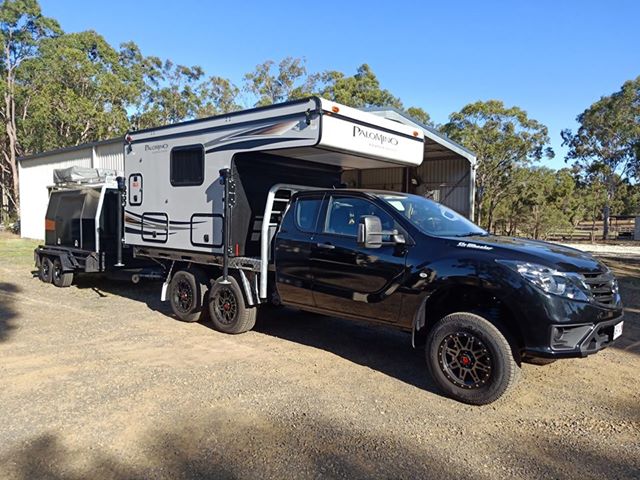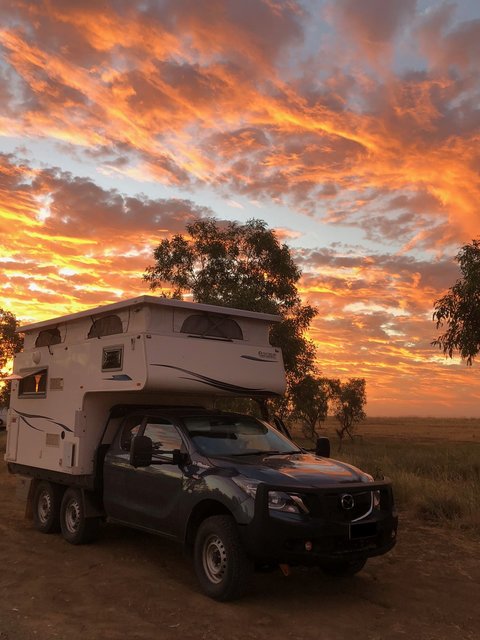This article gives you some of our first hand experiences, as two of us in the office own slide on campers (Travelander & Jackson's Carry Me Camper), and we also talk to many customers who have their own slide on camper, and or are thinking of buying one.
So what is a slide on?? Typically they are a ute backed camper that is removable (jack off legs), with accomodation and cooking facilities.
Costs, styles, weights and sizes vary greatly between the various options, but it is pretty safe to say that we have most brands of slide on's sitting on top of our six wheelers around the country. Most campers start at a dry weight of around 500Kg, with heavier units around 1.2 tonnes.
Australian made units are generally suited to a tray back vehicle so have a completely flat floor that sits on the top of a ute tray. The more popular American built campers are often built for the "tubs" that are popular over there, so they have cut outs in the sides that allow them to slide between the wheel arches of the tub. Many of these have been adapted to suit Aussie conditions with tool boxes built into those cut outs giving more storage space and so they can sit on a tub.
But there are quite a few Australian slide on camper manufacturers offering a range of styles to suit most tastes, vehicle sizes (eg dual cab, king cab, single cab) and budgets, not to mention all the second hand units.
Weight - this is the single biggest issue for most slide on owners. Overall vehicle weight is infinitely variable but is the most important thing when it comes time to choosing both a suitable vehicle and your camper. So before you start the process, know your weights.
Most slide on camper manufacturers list a "Dry Weight". This is generally the weight of the finished camper without including any water, gas, batteries, food, clothing, bedding, firewood etc. So in essence, the dry weight is the bare bones, and from there anything you load into the vehicle and or the camper from that point adds additional weight which comes off the vehicles payload (without forgetting that the weight of passengers also needs taking into account).
Most standard utes have a listed payload of 1 tonne. The reality is that the real payload number is generally lower than this, especially by the time you take off a tub and replace it with a tray, and then add other accesories like bull bars, tow bars, long range fuel tanks etc. So realistically, you may have a usuable payload of around 800-900Kg.
A simple GVM suspension upgrade will typically give you an extra 280Kg of usable payload, which may work for those planning short trips and or a very light camper with the ability to pack light. But anyone planning on an extended trip with extra gear will be constantly thinking about vehicle weights and their GVM, as solar panels, chainsaws, firewood, extra fuel and water, chairs, tables, more food & clothes get added to the vehicle. An overloaded vehicle is not only less safe on the road, but can be illegal as well.
Ride and Handling - a heavily loaded 4wd will tend to float a little on the road. We have found from our own experiences that you can get tail end movement in the ute (usually from the side flex in the side walls of the tyres), and when travelling through dips in the road most will usually get a little bouncing action as the chassis flexes, which can be disconcerting and keeping the driver on their toes. This bounce can be worse if you are towing, as the trailer tends to kick somewhat adding to the pressure on the rear of the car. Add to that the body roll you get when cornering, and driving a fully loaded vehicle is not for the faint hearted, especially on outback roads.
By contrast a six wheel convcersion usually increasing usable payload by close to a tonne, giving most customers around 1,800Kg of usable payload to play with. On top of that, the extra suspension eliminates alot of the bounce and body roll that you get in a standard 4wd, and lastly it gives you extra space on the tray, either allowing for a bigger slide on in the first place (eg a single cab sized slide on on a dual cab six wheeler), and or allowing for some extra storage in front of the slide on camper.
The finished six wheeler, with the extra set of suspension on the 3rd braked axle certainly makes the vehicle far more pleasant to drive giving you more control behind the steering wheel as well as helping ensure that the whole rig stays legal.

